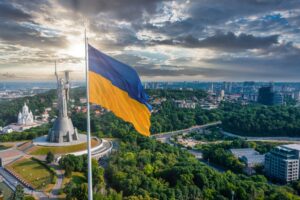The largest volcanic eruption in recorded history took place in 1815 on the island of Sumbawa, which lies east of Bali in the Indonesian archipelago. After lying dormant for several thousand years Mount Tambora suffered a series of violent explosions over the course of a ten-day period which expelled a staggering 125 cu km (30 cu mi) of molten magma and volcanic debris. (To put this into some perspective, this is over 20 times the volume of material discharged in the Mount St Helens eruption of 1980.) In the process, the top 1,500 m (4,920 ft) of the volcano’s cone was blown away and a giant hollow created, known technically as a caldera, 700 m (2,300 ft) deep and 6 km (3.75 mi) wide.
Tambora is an example of a Plinian eruption (so called after the Roman writer Pliny the Younger who first observed the phenomenon during the AD 79 eruption of Vesuvius). The distinguishing features are a towering column of ash and gases and deadly pyroclastic flows which obliterate everything in their path. In Tambora’s case the eruptive column rose over 40 km (25 mi) into the atmosphere, while the flows laid waste much of the island and some 10,000 people suffered horrible deaths. A thick carpet of ash descended, killing animals and crops and destroying all vegetation on Sumbawa and neighboring islands. It would be five years before new growth returned to the area.
The explosion, which was thought to have been caused by a massive build-up of pressure after ocean water had penetrated cracks in the earth’s crust and reacted with magma deep inside the volcanic chamber, led to falls in temperatures worldwide in the following years; indeed, 1816 became known throughout Europe and North America as ‘the year without a summer’.
When did the Tambora volcano eruption happen: April 5-15 1815
Where did the Tambora volcano eruption happen: Sumbawa Island, Indonesia
What was Tambora’s volcano eruption death toll: 92,000, the majority from the effects of starvation and disease following the disaster. This is the largest death toll from a volcanic eruption in recorded history.
You should know: The dust and acid aerosols which hung in the atmosphere for years afterwards produced strange and brilliant sunsets which were captured by many artists of the day, including the great British landscape painter J M W Turner.






















